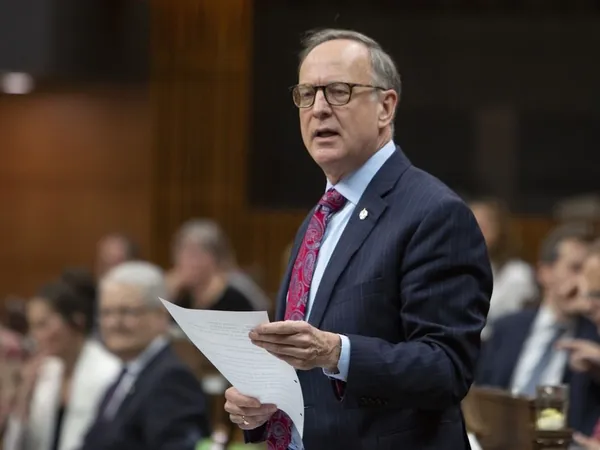
Ontario Government Targets Downtown Toronto Office Market: What You Need to Know!
2024-09-24
Ontario Government Targets Downtown Toronto Office Market: What You Need to Know!
The Ontario government is taking significant steps to invigorate downtown Toronto's commercial real estate landscape by seeking to acquire a number of office buildings in the city. This move comes as downtown activity remains notably lower than pre-pandemic levels, presenting both challenges and opportunities in the real estate sector.
According to documents linked to this initiative, the government is specifically looking for office buildings that range from 200,000 to 600,000 square feet. These properties must be strategically located within a 10-minute walk to a subway station or a 10-minute drive to a major highway, emphasizing accessibility for future tenants.
The province has set its sights on buildings valued at below $500 per square foot, which points to a potential investment of up to $100 million for a 200,000-square-foot property. This ambitious plan is managed by Infrastructure Ontario, which oversees government real estate holdings. However, details about the exact number of buildings being targeted and their intended use remain under wraps.
Spokesman Jeff Giffen from Infrastructure Ontario commented, “The province aims to improve public sector efficiency and reduce operational costs.” He stressed that the procurement process is still in its infancy and no concrete purchasing decisions have been finalized.
Carl Gomez, chief economist and head of market analytics at CoStar, noted that this plan signifies a commitment to revitalizing Toronto's struggling office market. “Purchasing office buildings is a conceptual move to keep the office market alive,” he explained, while also acknowledging the challenges posed by high interest rates, the shift toward hybrid work, and ongoing economic uncertainties which have led to diminished interest in office properties.
Currently, the average estimated market value for office buildings in Toronto stands at $442 per square foot, a figure that varies significantly based on location and characteristics of the buildings. Interestingly, office vacancy rates hover slightly above 10%, underlining the need for strategic interventions.
Adam Jacobs, head of research at Colliers Canada, pointed out that the government has financial advantages over private buyers, who are often struggling to secure loans for office acquisitions due to lenders' reluctance to back such deals. “If you’re a government entity with access to capital, it makes sense to take action now – it’s a favorable buying climate,” he remarked.
In fact, recent data from Colliers indicates that only 61% of employees are working in-office compared to before the pandemic, signaling a shift in how workspaces are utilized. The Ontario government aspires to occupy a significant portion of any newly acquired office buildings, aiming for at least 60% of the space to be available for government use within five years.
Building owners looking to sell can respond to this opportunity by submitting comprehensive details about their properties, including floor plans and any necessary repairs, to Jones Lang LaSalle Real Estate Services (JLL) by October 17.
JLL was awarded a contract by Infrastructure Ontario in July to spearhead this initiative, with plans to engage the market and gauge interest from potential sellers. This contract is set for one year, with an option to extend it further, underscoring the government’s commitment to transforming the downtown office landscape.
Stay tuned as this story unfolds! Will the Ontario government’s bold move breathe new life into Toronto’s office market? The future of downtown real estate is now in their hands!









 Brasil (PT)
Brasil (PT)
 Canada (EN)
Canada (EN)
 Chile (ES)
Chile (ES)
 España (ES)
España (ES)
 France (FR)
France (FR)
 Hong Kong (EN)
Hong Kong (EN)
 Italia (IT)
Italia (IT)
 日本 (JA)
日本 (JA)
 Magyarország (HU)
Magyarország (HU)
 Norge (NO)
Norge (NO)
 Polska (PL)
Polska (PL)
 Schweiz (DE)
Schweiz (DE)
 Singapore (EN)
Singapore (EN)
 Sverige (SV)
Sverige (SV)
 Suomi (FI)
Suomi (FI)
 Türkiye (TR)
Türkiye (TR)